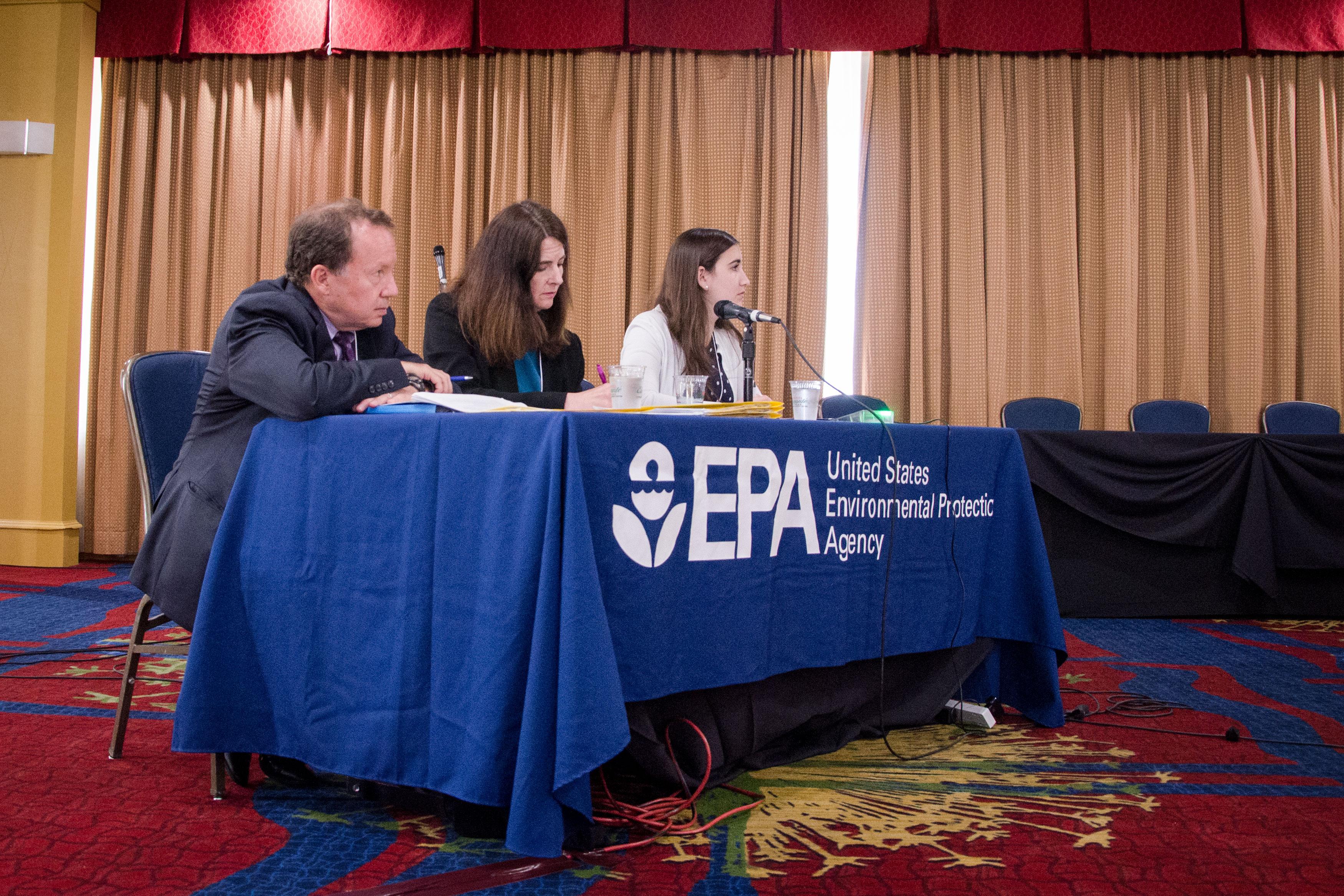

Water managers for the El Paso County communities of Security, Widefield, Stratmore Hills, and Fountain have been working to rid their drinking water systems of Perfluorinated Chemicals since 2016. The contamination, discovered that year, traces back to firefighting foam used at nearby Peterson Air Force Base.
“Fifty years from now, 100 years from now, the Widefield Aquifer will still be contaminated if we don’t figure out a way to clean it,” said Fran Silva-Blayney, chair of the Sierra Club Fountain Creek Water Sentinels. “Is remediation even possible?”
Silva-Blayney was one of a handful of community stakeholders invited to speak at a listening session organized by the Environmental Protection Agency. Her comments and others carried the same message: the EPA isn’t doing enough.
“We are past the point of evaluating, proposing and recommending,” Silva-Balyney said. “People’s lives have been compromised. It’s time to regulate, enforce and remediate.”
In a statement, EPA Regional Administrator Doug Benevento said the community listening session would “inform our path forward in addressing PFAS in communities here in Colorado Springs and across the country.” Regulations are under consideration that would create an enforceable drinking water standard for two of the most common PFCs — mainly PFOS and PFOA.
Right now, EPA has an advisory in place, which isn’t enforceable. Water districts in the area have chosen, voluntarily, to make sure drinking water has no more than 70 parts per trillion of the chemicals. The agency could also classify certain PFCs as hazardous, and they’re developing groundwater cleanup recommendations if contamination is found.
Residents like Liz Rosenbaum believe the EPA should have done something far sooner. Rosenbaum heads the Fountain Valley Clean Water Coalition, a grassroots group she formed in 2016. She had a lot to say to state and federal officials.
“We remember what we were told at the community meeting in the summer of 2016. And I quote: ‘it is hard to tell if these illnesses are a result from PFOS contamination, or because of the higher rate of smoking and obesity in your community.’ What we heard: ‘you don’t matter because you smoke and you’re fat.’ What right do you have to disrespect our community?”
The EPA has linked high concentrations of PFC exposure to low birth weights and even forms of cancer. Across the country, contamination has been linked to two sources: leaks from manufacturing plants that make substances like teflon and places that used the firefighting foam. Many residents who spoke at the meeting gave emotional testimony about family members who suffer from health complications.
Mark Favors spoke of his large family who’ve been hurt by this.
“My cousin Steve Patterson is here, his 13-year-old grandson had to receive a kidney transplant last year,” Favors said. “My father died of kidney cancer.”
Steve Patterson told EPA officials about other family members.
“So my sister-in-law was given one to five years to live a year ago. Our niece has cancer, now she’s going through chemo. We don’t know how much longer she’s going to live. Their mother and father both died of cancer.”
Carla Lucas said her son has developed a medical condition.
“When my son was in his early 20s, he began having health issues, with rashes and skin problems, which were eventually diagnosed as having an autoimmune disease,” Lucas said.
Many people made the same request of federal officials: offer free blood testing for PFCs. Other states that have experienced PFC water contamination, like New York, offer such testing, but Colorado does not. Many residents, including an El Paso County Commissioner, pleaded for more health studies.
Susan Gordon, a former Venetucci Farm manager, said the farm closed down because of contaminated groundwater.
“When I look at what other states have been doing, compared to what’s happening in Colorado. I mean, we’ve heard virtually nothing from the governor.”
The EPA’s Colorado meetings are the third of four around the country. The agency is expected to release a management plan for PFC contamination that could declare some of the chemicals as hazardous waste, by the end of the year. The agency is also accepting public written statements as part of their community engagement on PFCs.
Editor's Note: This story was updated to correct the acronyms for the two most common PFC's as PFOS and PFOA.









